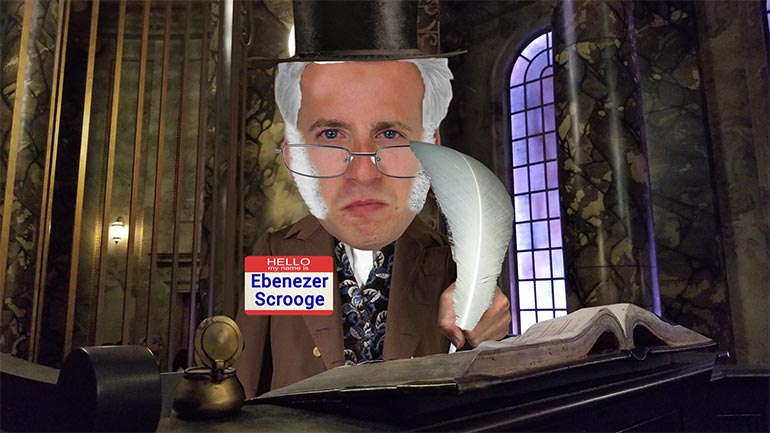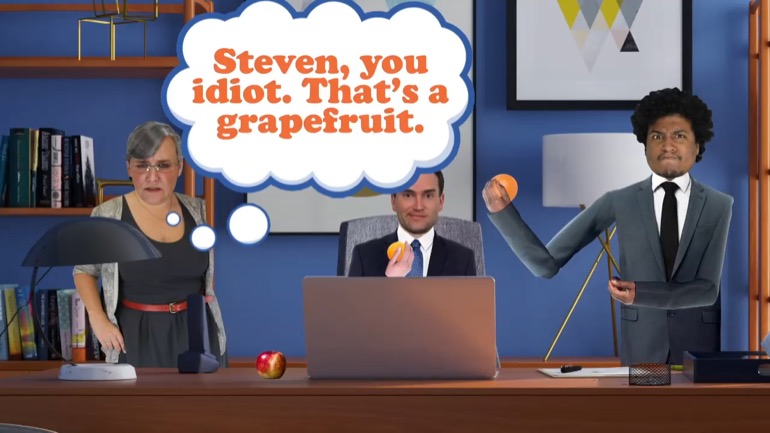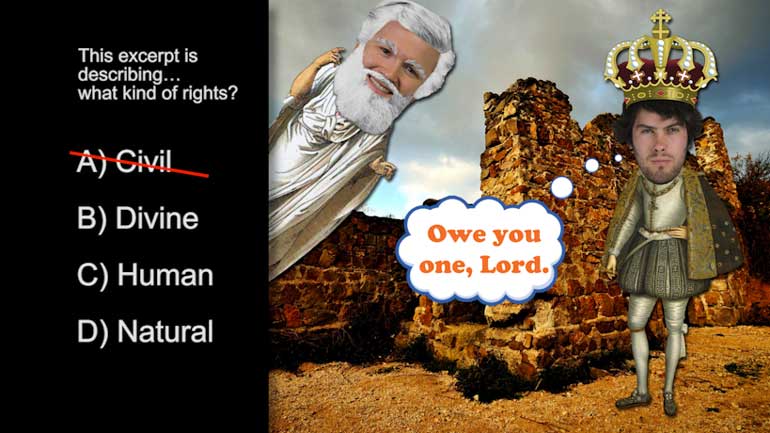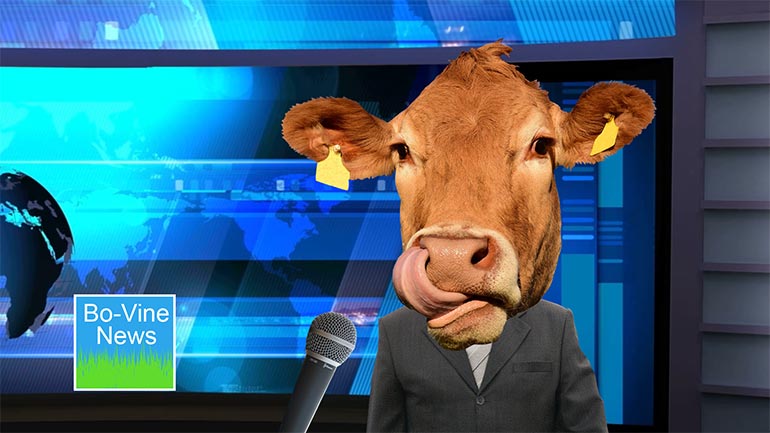ShmoopTube
Where Monty Python meets your 10th grade teacher.
Search Thousands of Shmoop Videos
International Videos 92 videos
What is the Advance Decline Ratio? The advance decline ratio is used to determine how the market performed on a given day. It does this by comparin...
A strong dollar is one that has earned trust on an international scale. It reflects a reliable currency...at least, more reliable than that of othe...
What is the Dow Jones Industrial Average? The Dow Jones Industrial Average is usually just called the Dow. It’s an average of 30 of the most well...
Finance: What Are Mutual Funds? 189 Views
Share It!
Description:
What are mutual funds? Mutual funds are an aggregation of stocks, professionally managed for a "small" fee. Investors wanting exposure to a given area can buy mutual funds focused on dividend or interest payments. They can focus on growth and tech. Or internationally. Stocks, bonds, commodities, and other vehicles all comprise mutual funds.
- Social Studies / Finance
- Finance / Financial Responsibility
- Life Skills / Personal Finance
- Finance / Finance Definitions
- Life Skills / Finance Definitions
- Finance / Personal Finance
- Courses / Finance Concepts
- Subjects / Finance and Economics
- Finance and Economics / Terms and Concepts
- Terms and Concepts / Derivatives
- Terms and Concepts / Accounting
- Terms and Concepts / Banking
- Terms and Concepts / Bonds
- Terms and Concepts / Company Management
- Terms and Concepts / Credit
- Terms and Concepts / Econ
- Terms and Concepts / Education
- Terms and Concepts / Financial Theory
- Terms and Concepts / Forex
- Terms and Concepts / Index Funds
- Terms and Concepts / Insurance
- Terms and Concepts / International
- Terms and Concepts / Investing
- Terms and Concepts / IPO
- Terms and Concepts / Managed Funds
- Terms and Concepts / Metrics
- Terms and Concepts / Mutual Funds
- Terms and Concepts / Real Estate
- Terms and Concepts / Regulations
- Terms and Concepts / Retirement
- Terms and Concepts / Stocks
- Terms and Concepts / Tax
- Terms and Concepts / Trading
- Terms and Concepts / Trusts and Estates
- Terms and Concepts / Wealth
- College and Career / Personal Finance
Transcript
- 00:00
finance a la shmoop. what are mutual funds? well half a century and change ago
- 00:07
a bunch of investors wanted to mutually pool their assets to make investments [men carry bags of cash]
- 00:13
together. they mutually agreed to abide by a relatively simple set of rules and
- 00:19
then they gathered funds to go invest. well why would they do this?
- 00:24
well scale. you've heard of the notion that you get a discount when you buy in
Full Transcript
- 00:29
volume or bulk right? well if not check these guys out
- 00:33
84 pounds of dog food for five bucks. even Fido can appreciate a good deal
- 00:37
when he sees it. dog food discounts we get but why would
- 00:40
anyone need to buy in bulk when investing in stocks and bonds?
- 00:44
well because back in the day the only way investors could invest in the stock
- 00:48
market was to buy an individual stock directly. same deal with a bond. a
- 00:53
typical stock might sell for 40 bucks a share. the problem was that if an
- 00:57
investor didn't buy a round lot of these shares while she was charged a massive
- 01:02
Commission. almost like a penalty for not being rich enough to buy a Costco type
- 01:07
portion of shares. well a round lot is any order that comes in blocks of a
- 01:11
hundred shares. ie 200 shares is a round lot, 500 shares is a round lot 738 shares
- 01:18
is not a round lot. some high-level calculus there. well the typical round
- 01:22
lot Commission might be 5%. an odd lot Commission might be 15%. so it made it
- 01:29
even harder for the small buyer to get invested in the market.
- 01:37
on a purchase of 100 shares at 40 bucks that's four grand. that's even a lot of
- 01:41
money today but think about what four grand bought you in 1952. but more than a [calculator showing inflation]
- 01:47
few hula hoops and a poodle skirt. inflation-adjusted it's almost 40 grand
- 01:51
today. it bought this and this and yes this so how is the average Josephina
- 01:56
able to plunk down 40 grand just on one stock?
- 02:00
well she's not. you know your grandma gooses catchphrase right? well the same
- 02:04
applies to investing four grand could be a life savings back then, and of a simple
- 02:09
retail investor put all her money in one stock and that stock tanked, then she was
- 02:15
Sol or sweetly out of luck. so mutual funds allowed that little guy investor
- 02:20
with very small amounts of money and for most it was a minimum of about two
- 02:25
hundred and fifty bucks, and it still applies today to pool his money with
- 02:28
thousands of other investors and get exposure to a basket of stocks. the fancy
- 02:34
$5 word here is diversification, and when assets are pooled that four grand of
- 02:39
mutual fund ownership might look something like this. well if a thousand
- 02:44
investors each put four grand on average into an investment pot well that would
- 02:48
give the pot four million dollars of buying power and it allow them easy
- 02:52
access or liquidity to have their four grand invested in a wide range of stocks
- 02:57
and bonds in whatever form they want it. and with a large pot of money to put to
- 03:01
work might they also get the ear of the company's CEO for 15 minutes a quarter?
- 03:06
would that ear make them invest the dough a bit more readily smartly better?
- 03:11
well maybe and at the end of the year let's say that four million was invested [chart picturing increase]
- 03:14
well and it has a value of 4.4 million bucks, that is it went up 10 percent in
- 03:19
a year. well when the thousand partners formed
- 03:22
the fund they agreed that they would divide the fund into slices of pie in
- 03:26
the same way that ownership of a company is divided into shares. well remember
- 03:31
Apple has over five billion shares outstanding. they trade it in 150 bucks
- 03:36
or so a share and multiplying the two together gives them a total market value
- 03:40
today of over 800 billion dollars. well the mutual fund might have two hundred
- 03:45
thousand shares outstanding so that at four million dollars of value
- 03:49
you to get the net asset value per share, or nav. you divide that total pi value by
- 03:56
the number of slices in it to get 4 million over 200,000 or 20 bucks a share.
- 04:01
now if the fund goes up 10% the number of shares outstanding in this scenario [equation]
- 04:05
hasn't changed, so the net asset value per share would be 22 bucks a share a
- 04:10
gain of 10%. in real life however investors buy additional shares in a
- 04:14
mutual fund and redeem them every day. why well they buy because rich uncle
- 04:20
Larry died and left him a million bucks and they already had that cool caveman
- 04:23
stereo. and they might sell because while the fund had a lousy performance and
- 04:27
their P.O.ed. or they might sell because the fund had great performance
- 04:31
and since they know that most investments regress to the mean ie
- 04:35
come average over time, they want to sell their mutual fund shares take their
- 04:38
chips off the table today and put the dough elsewhere. so let's say a new
- 04:41
investor comes in and wants to invest 6 grand in the fund, which closed at the
- 04:46
end of today at exactly 20 dollars a share. well let's also say that on this
- 04:50
given day everybody was happy with their investment. nobody wanted to sell and
- 04:55
nobody wanted to buy other than this one guy. well unlike bond shares an Apple
- 05:00
Walter doesn't need another already existing investor to sell him the shares.
- 05:04
he can buy six grand divided by $20 or 300 shares of the fund. those shares
- 05:09
didn't come from a disgruntled or even a gruntled other investor. they were sold
- 05:14
directly by the fund itself. well the analogous situation would be if
- 05:17
Apple sold shares directly to the public. those things do happen they're called
- 05:21
IPOs and they're also called secondary offerings, but they're not a daily event.
- 05:25
so a mutual fund shares sell to the public every day like we noted, and after
- 05:29
this transaction the investor now has 300 shares of this fund, a fund which now
- 05:34
has two hundred thousand three hundred shares outstanding. the value of the fund
- 05:39
went up the six thousand dollars that was put in so the funds value is now two
- 05:44
hundred thousand three hundred times twenty bucks or four million six [equation]
- 05:48
thousand dollars. and Walter now owns three hundred divided by two hundred
- 05:51
thousand or 0.15 percent of the which is money we're sure he'll
- 05:55
eventually spend wisely when he cashes out. he's having fun. you'll just have to [man drives red sports car]
- 06:00
trust us on this one.
Related Videos
What is bankruptcy? Deadbeats who can't pay their bills declare bankruptcy. Either they borrowed too much money, or the business fell apart. They t...
What's a dividend? At will, the board of directors can pay a dividend on common stock. Usually, that payout is some percentage less than 100 of ear...
How are risk and reward related? Take more risk, expect more reward. A lottery ticket might be worth a billion dollars, but if the odds are one in...
GED Social Studies 1.1 Civics and Government
































































































